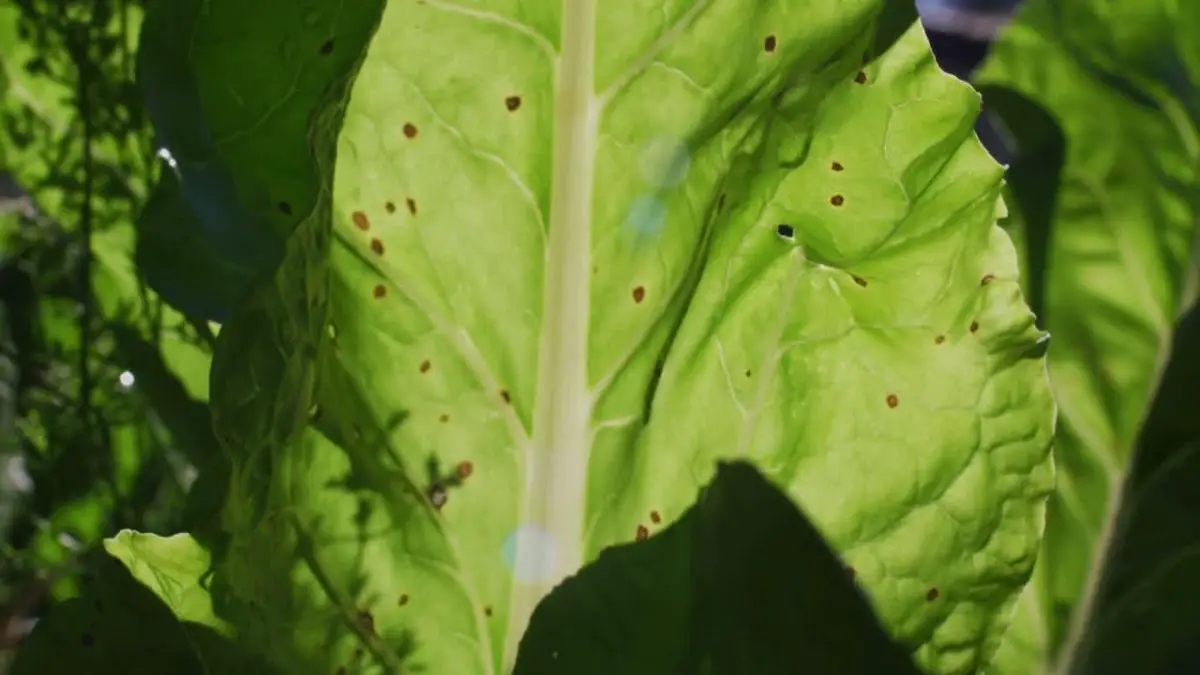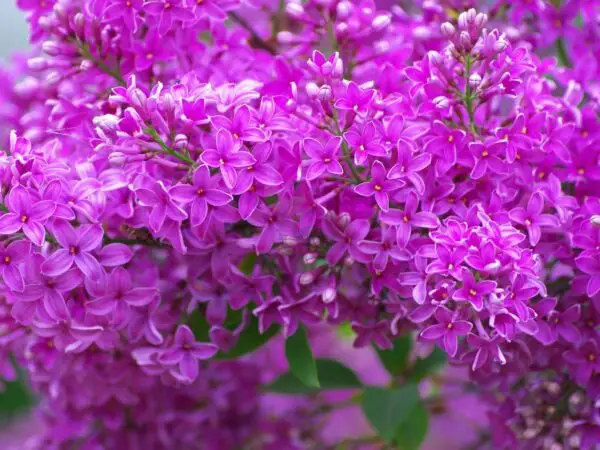Did you know that over 85% of plant owners struggle with the pesky issue of brown spots on their beloved greenery? These unsightly black spots not only detract from the beauty of your houseplants but can also indicate underlying health issues. Understanding the causes and remedies for brown spots on plant leaves is crucial to maintaining a thriving indoor jungle or garden oasis.
Key Takeaways
- Identify the Causes: Examine your plants closely to determine the root cause of brown spots, whether it's due to fungal infections, pests, or environmental stress.
- Treat Leaf Spot Types: Use appropriate treatments based on the type of leaf spot affecting your plants, such as fungicides for fungal infections or insecticidal soaps for pest-related issues.
- Promote Healthy Plants: Encourage plant health by providing adequate sunlight, water, and nutrients, which can help prevent brown spots and boost overall plant resilience.
- Prevent Recurrence: Implement proper sanitation practices, avoid overwatering, and space out plants adequately to reduce the chances of brown spots reoccurring.
- Regular Inspection Matters: Regularly inspect your plants for early signs of brown spots to address issues promptly and prevent them from spreading to other plants.
- Embrace Sustainable Gardening: Emphasize sustainable practices like using organic fertilizers and natural pest control methods to maintain a healthy garden ecosystem.
Understanding Brown Spots
Defining Brown Spots
Brown spots on plant leaves can vary in color and shape, often caused by fungal diseases. These spots may range from circular to angular, sometimes displaying visible signs of pathogen spores. Understanding bacterial leaf spots is crucial; they manifest as small dark brown spots with yellow circles.
Causes of Leaf Spot Diseases
Garden waste, lack of sunlight, and wet conditions commonly lead to brown spots on leaves. Pathogens can easily spread from infected leaves to nearby plants, especially in crowded areas. Insufficient sunlight and airflow create ideal conditions for pathogen growth.
Common Leaf Spot Diseases
Septoria
- Septoria leaf spot disease is identifiable by its round spots with black margins that eventually shrivel and blacken.
- Spores overwinter on the ground, impacting plant health significantly.
- Early detection and treatment are essential to prevent further damage from Septoria.
Venturia
- Venturia leaf spot disease presents as brown and black spots in early spring, affecting leaves and weakening shoots.
- Irregular leaf patterns and contorted stems are common symptoms caused by Venturia.
- Controlling Venturia is vital to maintain plant vitality.
Cedar-Apple Rust
- Cedar-Apple Rust displays rust fungispots on leaves, fruits, and twigs during wet, warm weather.
- The disease can have a severe impact on both ornamental and fruit trees.
- Preventive measures are key to protecting plants from Cedar-Apple Rust.
Anthracnose
- Dark spots on leaves and stems characterize Anthracnose, leading to defoliation and dieback.
- Understanding the lifecycle of Anthracnose is crucial due to its significant impact on plant health.
- Early intervention and treatment play a key role in controlling Anthracnose.
Identifying Causes
Disease Factors
Leaf spot diseases on plants can be caused by various factors such as pathogens, environmental conditions, and plant stress. Environmental conditions like moisture levels and humidity play a crucial role in increasing susceptibility to these diseases. Proper care techniques are essential in preventing and managing leaf spot diseases effectively.
- Pros:
- Understanding the causes helps in implementing targeted prevention strategies.
- Proper care techniques can significantly reduce the incidence of leaf spot diseases.
- Cons:
- Neglecting environmental factors may lead to persistent issues with leaf spot diseases.
Environmental Contributors
Moisture, humidity, and lack of airflow are key environmental factors that create an ideal breeding ground for pathogens causing leaf spot diseases. Garden debris and overcrowded plants can serve as harbors for pathogens, facilitating infections. Maintaining a healthy environment with adequate airflow is crucial for promoting plant health.
- Moisture levels
- Humidity
- Lack of airflow
Plant Stress Signals
Recognizing signs of plant stress like wilting, discoloration, and stunted growth is vital in addressing potential leaf spot diseases early on. Stressed plants exhibit heightened vulnerability to infections, making it imperative to tackle stress through proper care practices. By addressing plant stress promptly, the risk of developing leaf spot diseases can be significantly reduced.
- Wilting
- Discoloration
- Stunted growth
Treating Leaf Spot Types
Dry Spots on Edges
Dry spots on leaf edges indicate leaf spot diseases caused by fungal pathogens. These spots can spread, impacting the plant's health. Treatment involves fungal sprays and removing affected leaves to prevent further damage.
To manage dry spots effectively, ensure proper air circulation around the plant. Avoid overhead watering to reduce moisture on leaves. Consider using copper-based fungicides as a preventive measure against fungal pathogens.
Burn-like Spots
Burn-like spots on leaves signal bacterial leaf spots, which can lead to holes and affect plant vitality. To control bacterial leaf spots, use bactericides and prune infected areas promptly. Maintain good sanitation practices to prevent the spread of bacteria.
Protect plants from bacterial leaf spots by avoiding overhead watering and providing adequate spacing between plants for better air circulation. Consider treating affected plants with copper sprays to combat bacterial infections effectively.
Wet Brown Spots
Wet brown spots on leaves result from excessive moisture and poor air circulation, creating ideal conditions for pathogen growth. Adjust watering schedules to avoid overwatering and improve drainage in potted plants. Prune affected areas promptly to prevent the spread of disease.
Prevent wet brown spots by watering plants at their base rather than overhead. Increase ventilation around plants by spacing them adequately. Consider applying neem oil as a natural remedy to control fungal growth on leaves.
Getting Rid of Brown Spots
Treatment Tips
When dealing with brown spots on plant leaves, effective treatment options are essential. Fungal and bacterial infections are common culprits behind these unsightly spots. To combat this issue, consider using organic methods or eco-friendly products for sustainable management.
Early intervention plays a crucial role in managing brown spots effectively. Proper application of treatments is key to stopping the spread of infections. By addressing the issue promptly, you can prevent further damage to your plants.
- Organic methods and eco-friendly products
- Early intervention and proper application
- Importance of sustainable management
Preventive Measures
To reduce the risk of brown spots on plant leaves, preventive measures are vital. Proper plant spacing helps improve air circulation, reducing humidity levels that favor infection. Regular sanitation practices also play a significant role in preventing the spread of diseases.
Regular inspection and monitoring are essential for early detection of leaf spot diseases. By staying vigilant, you can identify issues before they escalate. Sustainable practices and environmental controls can help maintain plant health and minimize the risk of infections.
- Proper plant spacing and sanitation practices
- Importance of regular inspection
- Sustainable practices for prevention
Promoting Healthy Plants
Care Techniques
To maintain healthy plants, focus on pruning to remove affected leaves, watering appropriately, and fertilizing adequately. Optimal growing conditions are crucial for plant health. Adjust care routines based on plant needs and environmental factors.
Regularly inspect your plants to detect brown spots early, preventing disease spread. Routine check-ups help identify issues before they worsen. Monitoring plant health and adjusting care practices promptly are essential for plant well-being.
Sustainable Practices
Implement sustainable practices like composting, mulching, and natural pest control methods to sustain plant health. Biodiversity and ecosystem balance play a key role in preventing leaf spot diseases. Utilize organic methods and eco-friendly products for sustainable gardening practices.
Preventing Recurrence
Monitoring Health
Monitoring plant health is essential to detect issues early. Visual inspection helps identify changes in leaf color or texture. Soil testing reveals nutrient deficiencies affecting plant growth. Pest observation allows for timely pest control measures.
Keeping track of changes in plant appearance and growth patterns is crucial. Any sudden alterations may indicate underlying health problems. Proactive monitoring and care help maintain plant health, preventing issues like brown spots on leaves.
Maintaining optimal plant health requires adjusting care routines regularly. Understanding seasonal changes and specific plant requirements is key. Changes in watering frequency, fertilization methods, and pruning practices directly impact overall plant vitality.
Adapting care routines can effectively prevent leaf spot diseases. By tailoring care based on plant needs, you enhance its resilience against common diseases. Consistent adjustments contribute to the plant's well-being and minimize the risk of recurring brown spots on leaves.
Adjusting Care Routines
Adjusting care routines according to seasonal variations is crucial for plant well-being. Different seasons demand different levels of watering, sunlight exposure, and fertilization. Adapting these practices ensures optimal growth conditions and reduces the likelihood of leaf spot diseases.
Understanding how watering, fertilizing, and pruning influence plant health is vital. Overwatering can lead to root rot, while inadequate fertilization may cause nutrient deficiencies. Proper pruning promotes air circulation, reducing humidity levels that encourage disease development.
Adapting care routines plays a significant role in promoting plant vitality and preventing leaf spot diseases. By fine-tuning care practices based on changing environmental conditions, you create an environment that fosters healthy growth and minimizes disease susceptibility.
Environmental Control
Environmental control measures are essential in preventing leaf spot diseases. Improving airflow around plants reduces moisture accumulation, decreasing the risk of fungal infections. Monitoring light exposure helps maintain optimal photosynthesis levels for healthy foliage growth.
Temperature fluctuations can impact plant health significantly by stressing the plants' immune systems. Creating stable temperature conditions supports consistent growth patterns and reduces the likelihood of stress-induced diseases like leaf spots.
Optimizing growing conditions through environmental control practices enhances overall plant health and resilience against diseases like leaf spots. By regulating airflow, moisture levels, light exposure, and temperature consistently, you create an environment that promotes vigorous plant growth while minimizing disease risks.
Plant Care Tips
Watering Techniques
Proper watering techniques are crucial for plant health. Overwatering can lead to brown spots on plant leaves due to moisture-related diseases. To prevent this, water plants at the base to avoid wetting the leaves. Adjust watering frequency based on plant needs and environmental conditions to maintain optimal moisture levels.
- Water at the base
- Avoid wetting leaves
- Adjust frequency based on needs and environment
Soil Health
l health plays a vital role in preventing nutrient deficiencies and enhancing plant immunity. Factors like soil pH, drainage, and organic matter content significantly impact plant growth and disease resistance. Balanced soil fertility is essential for overall plant health and vitality.
- Prevent nutrient deficiencies
- Enhance plant immunity
- Maintain balanced soil fertility
Light Requirements
Understanding the light requirements of plants is essential for their growth and photosynthesis process. Inadequate light exposure weakens plants, making them more prone to diseases like brown spots on leaves. Adjusting plant placement and providing supplemental lighting can help meet the required light levels.
- Ensure proper photosynthesis
- Prevent weakening of plants
- Provide supplemental lighting if needed
Importance of Inspection
Spotting Early Signs
Regularly inspecting plants is crucial to spot early signs of brown spots on leaves. Identifying leaf discoloration, spots, and abnormal growth patterns is essential. Early intervention helps prevent the spread of leaf spot diseases.
Routine Check-ups
Routine check-ups offer multiple benefits for plant health. Monitoring plant vitality and detecting issues early are key advantages. Establishing a schedule for regular inspections ensures consistent plant care.
Sustainable Gardening
Organic Methods
Organic methods offer natural solutions for managing leaf spot diseases on plants. By avoiding synthetic chemicals, gardeners can protect both their plants and the environment. Cultural practices, such as proper watering and spacing, play a crucial role in disease prevention.
Implementing organic treatments not only controls pathogens effectively but also supports sustainable gardening practices. For example, using neem oil or copper fungicides can combat leaf spot diseases without harming beneficial insects. These methods promote a healthier ecosystem within your garden.
- Benefits of organic methods:
- Environmentally friendly
- Safe for beneficial insects
- Promotes long-term plant health
Eco-friendly Products
Eco-friendly products like biofungicides and plant-based sprays provide effective alternatives for managing leaf spot diseases sustainably. These products are derived from natural sources, reducing the impact on the environment compared to traditional chemical treatments.
By incorporating eco-friendly products into your gardening routine, you can protect your plants while maintaining a healthy ecosystem. Biofungicides containing beneficial bacteria or fungi help suppress disease development while being safe for bees and other pollinators.
- Advantages of eco-friendly products:
- Reduced environmental impact
- Safe for pollinators
- Effective disease management
Summary
Understanding the causes of brown spots on plant leaves is crucial for effective treatment and prevention. By identifying the underlying issues, you can implement targeted solutions to promote healthier plants and prevent future occurrences. Remember to inspect your plants regularly, provide proper care, and follow sustainable gardening practices to maintain a vibrant garden. Take action now to ensure your plants thrive and remain free from unsightly brown spots.
Frequently Asked Questions
What are the common causes of brown spots on plant leaves?
Brown spots on plant leaves can be caused by various factors such as fungal or bacterial infections, nutrient deficiencies, overwatering, or pests. Identifying the specific cause is crucial for effective treatment.
How can I effectively treat different types of leaf spot causing brown spots on my plants?
Treatment for leaf spot diseases varies depending on the specific type. Methods may include pruning affected areas, applying fungicides, improving air circulation, adjusting watering practices, and ensuring proper nutrition for the plants.
What are some tips for promoting healthy plants to prevent brown spots on leaves?
To promote healthy plants and prevent brown spots on leaves, ensure proper watering practices, provide adequate sunlight, maintain good air circulation around plants, avoid overcrowding, fertilize appropriately, and regularly inspect plants for early signs of issues.
Why is regular inspection important in preventing and managing brown spots on plant leaves?
Regular inspection allows you to detect early signs of problems such as brown spots on plant leaves. By identifying issues promptly, you can take necessary actions to address them before they escalate, helping maintain the overall health of your plants.
How can sustainable gardening practices help in preventing brown spots on plant leaves?
Implementing sustainable gardening practices such as using organic fertilizers, practicing crop rotation, companion planting, and maintaining a balanced ecosystem in your garden can help prevent diseases that cause brown spots on plant leaves. Sustainable methods promote plant health and resilience.
Image Source: Paid image from CANVA




